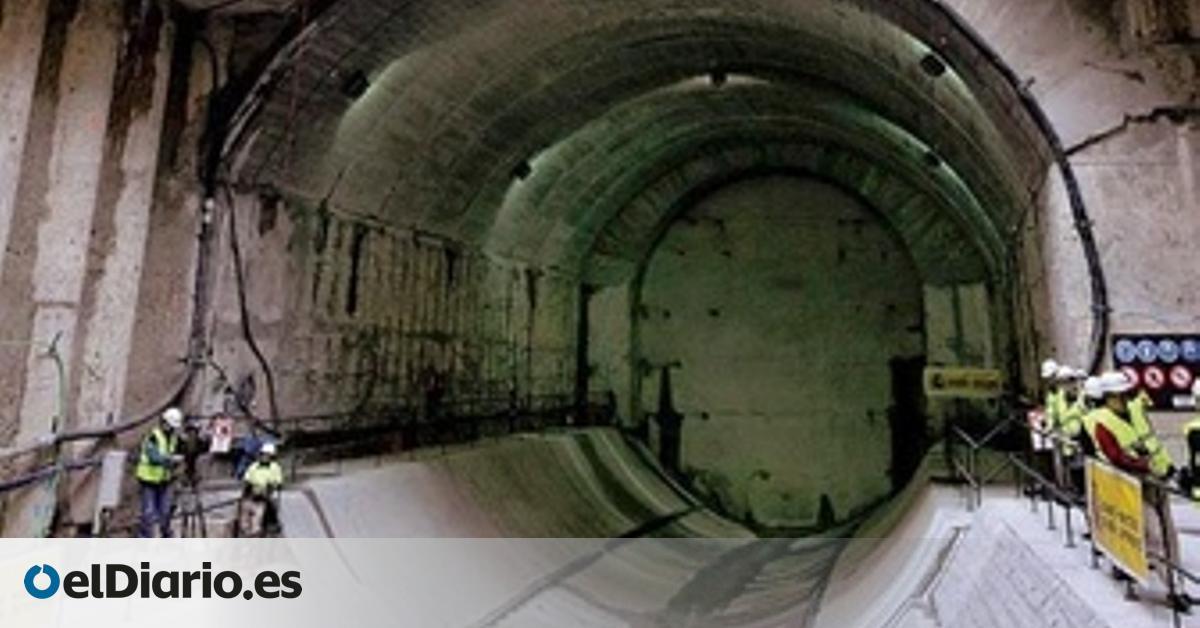
Competition in public tenders in Spain has fallen to a new historical low in 2022, according to the Independent Office for Regulation and Supervision of Contracting (OIReScon), in charge of ensuring the proper functioning of public procurement.
In its report on ‘Public procurement figures in 2022’, which has just been published, the agency warns that “average attendance has generally been reduced in all procedures compared to 2021, following a decreasing trend since 2019 ”, first year for which this entity collects data.
Thus, last year the average number of bidders in all procedures fell to a minimum of 3.22, compared to 3.94 in 2021 and 4.04 in 2019 (see graph).
The office recalls that “there is an important correlation between the degree of participation in the tenders” and the lower prices. “The percentages of awards with more than one bidder in service, supply and works contracts have decreased compared to 2021, both in amount and number of awards,” he adds.
In 2022, a record for public tenders with a single bidder was broken, as the provisional data published by the office a few months ago already warned. The new report reflects that of the total lots and contracts awarded in 2022, once awards by negotiated procedure without advertising have been excluded, 39.92% had a single bidder. It is a record, with an unprecedented increase of five points compared to 2021.
The office does not assess the causes of this situation. Its analysis is merely quantitative and “aseptic,” recalls Pilar Canedo, competition expert and former advisor to the National Markets and Competition Commission (CNMC). With the limited resources it has (a year ago it had half of its staff of 50 people uncovered), OIReScon is dedicated to processing enormous volumes of data that are published on public procurement platforms.
As its president, María Luisa Araújo, has said on some occasion, “it does not stop at a specific file or a specific contracting body,” but instead seeks to find “weak points” and “systemic problems” in public procurement.
Low competition would be one of those systemic problems. The percentage of tenders with a single offer is in fact one of the ten key indicators that the European Commission takes into account to evaluate the quality of public procurement in member countries, recalls Pilar Canedo.
On the phone, the former CNMC advisor considers the data “worrying.” He believes that “quite soon” and as a “common sense assumption,” this very low turnout may be linked to the distribution of the 70 billion European Next Generation funds, in which “some more urgent procedures have been established and that may have as a consequence that there are almost direct awards.”
Last Thursday, in her farewell to the Congress of Deputies to go to preside over the European Investment Bank, the still economic vice president, Nadia Calviño, stated that 33,000 million of European funds have already been distributed between awards and aid, with about 2,000 million a month in calls and tenders. Of those 33,000 million, most of the calls have been resolved by the central Administration, with 28,000 million, and another 5,600 million correspond to the communities.
If the economic amount of the contracts awarded in 2022 is analyzed and not the number of tenders, last year there was a single bidder in 28.63% of the money awarded in public tenders. A year before this only occurred in just over 20% of what the Administration paid.
“The amount awarded to contracts with a single bidder has increased in the three territorial areas during 2022, more markedly in the Local and State,” the report highlights.
By type of contract, the average turnout of bidders in the ordinary open procedure was 3.81. In the simplified modality it was 3.42. In the restricted procedure it remained at 3.3. In the negotiation without advertising there were only 1.26 bidders per contract.
The study highlights a special reduction in competition in works concession contracts. The average number of bidders has gone from 9.33 in 2020 to 2.18 in 2022. In works contracts it has gone from 7.39 in 2020 to 4.5 average bidders in 2022. This sector is traditionally one of the most conflictive from the point of view of cartel formation.
In its report, the OIReScon considers the reduction in attendance in the open procedure “particularly significant.” Both in its ordinary modality (from 4.52 bidders on average in 2021 to the aforementioned 3.81 in 2022) and, “especially”, in the simplified one, where it went from 4.67 bidders on average in 2021 to 3.42 in 2022.
The open procedure, according to their calculations, entails a reduction in the award amount of 11% compared to the initial budget for public contracts. In the simplified modality it reaches almost 14%, the highest among those analyzed. Meanwhile, in trading without advertising (the most opaque) “the percentage is drastically reduced to 2.17% on average,” the report highlights.
The organization has carried out a specific analysis of the concession contracts. “A very limited average attendance has been confirmed” and the high percentage of tenders for these contracts that are void is “worrying”, without going into the causes. These contracts, however, “are of very limited importance.” They account for 3.43% of awards, compared to the EU average of 12%. The local public sector is the one that uses them the most.
A positive fact from the point of view of transparency and the reduction of final prices, according to the entity’s calculations, is the new decrease registered in negotiated procedures without advertising, the most opaque, which represented 9 in 2022. .83% of the files, compared to 18.73% in 2020. Likewise, in 2022 emergency processing plummeted by 37.22% and urgent processing by 53.88%.
The year of the pandemic, and the enormous difficulties that the Public Powers encountered in locating basic supplies to stop the coronavirus, such as masks, gloves or hydroalcoholic gels, motivated a surge in processing through that route and through emergency. In June 2020, the OIResCon warned that the administrations had until then spent 2.1 billion on 11,100 emergency contracts and warned of a lack of transparency in these awards, in a harsh report that the first president of the organization published just before resigning.
More than 100,000 million
In 2022, the volume tendered by all Administrations broke all records, surpassing the barrier of 100,000 million euros for the first time, 5% more. Of that amount, 40.39% corresponded to the regional sector, 33.15% to the local sector and 26.45% to the state sector.
State-level tenders were the only ones that fell back. Its amount fell by 13% in 2022, while those in the regional sector (+17.6%) and local sector (+8.6%) grew. The total number of tenders grew by more than 13% in 2022, up to 183,277, which represents a cumulative growth of 81% compared to 2018, when OIReScon began analyzing the data.
The volume finally awarded grew by 11.4% last year, to a record figure of 70,304.71 million. This amount is 42% higher than in 2019. Of the total awarded, the open procedure accounted for 68.89%; the simplified open, 6.63% and the negotiated without advertising, 9.9%.
In Spain, the level of spending on public procurement in 2022 reached 11.52% of the Gross Domestic Product (GDP) and 24.11% of total public spending, according to the Organization for Economic Cooperation and Development (OECD). . Until a year ago, Spain did not approve the national strategy to improve public procurement that Brussels had been demanding for years and whose first objective is to “combat corruption and irregularities in the application of public procurement legislation.”
Source: www.eldiario.es

